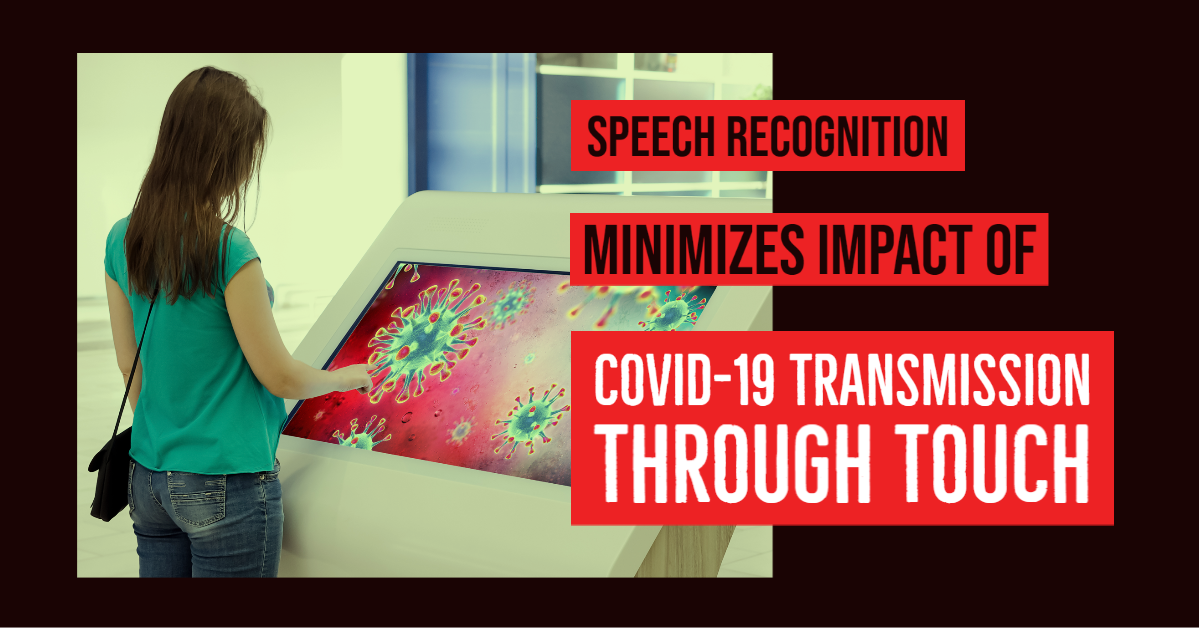There’s no doubt about it. We’re living in some challenging times. Although not the zombie apocalypse that so many have predicted (and maybe hoped for?), COVID-19 has altered how we interact with other people, our environment, even our technology. More specifically, touchscreens.
Touchscreens are a vital part of our everyday lives. From mobile devices to gaming consoles, we are going to be touching some sort of interactive screen, especially as a large percentage of us are hunkering down in place. Outside of our sanctuaries, touchscreens are becoming more and more prevalent in our daily interactions, such as self-checkout lanes at the grocery store, which is why it’s crucial to understand how germs interact with them.
The novel coronavirus, known as COVID-19, affects lungs and airways, causing symptoms that most commonly manifest as a cough, fever, and shortness of breath, and can potentially be fatal. It’s not known precisely how the coronavirus spreads from person to person. Still, other similar viruses are spread in cough droplets, whether directly or through touch after coughing into your hand, or wiping your mouth, and so on. Studies have suggested coronaviruses like SARS, and MERS can stay alive for up to three hours in the air but as much as two or three days on metal, glass, and plastic surfaces, aka touchscreens. Does that mean we should stop using touchscreens all together? Not at all. But, there are some positive ways we can minimize our exposure as well as keep our own environments sanitary. But even with these precautions in place, on the other side of this coronavirus pandemic, and there is the other side, businesses will continue to be faced with the specter of public safety and minimizing human-screen contact. Going forward, how can companies expect to meet these challenges?
At nuMedia Innovations, the answer’s pretty obvious: our PRSONAS-VMS™ solution. Using her voice first AI interface, this life-sized avatar can provide extensive concierge services, including way-finding and Google interaction. She also boasts the ability to speak and understand almost any language. More than just a touchscreen, she improves and drives customer engagement without losing that human touch. At the same time, her conversational AI still maintains a health-minded environment by minimizing unnecessary physical interactions. The benefits of a digital assistant are far-reaching, including public kiosks in banks, corporate offices, as well as public transportation, shopping malls, restaurants, and even libraries.
Touchscreens will always be a part of our everyday world for the foreseeable future, even with the added benefits of conversational AI. Learning how to establish and maintain a health-minded environment by integrating this AI technology, along with keeping touch interfaces sanitized, will be crucial, not only for economic recovery beyond the coronavirus pandemic but for overall future growth. Here are some basic guidelines for keeping touchscreens clean and disinfected:
Cleaning
1. To prepare for cleaning the touchscreen, power down the device.
2. Use wet wipes, a sprayed cloth, or a dampened cloth. Ensure any excess moisture is squeezed from the cloth. Do not get liquids inside the device or spray the screen directly.
3. Select only non-abrasive cleaning wipes or cloths to avoid scratching the surface of the touchscreen.
4. Avoid highly concentrated alcohol (greater than 70%), non-diluted bleach, or ammonia solutions, as these may cause screen discoloration.
5. Wipe the touchscreen surface with the appropriate wipes or cloths and approved cleaning products, and allow the screen to air dry.
Disinfecting
1. To prepare for disinfecting the touchscreen, power down the device.
2. Dampen a new clean, non-abrasive cloth with an approved disinfectant household bleach solution - 1/3 cup of bleach per gallon of water - or isopropyl alcohol - less than 70%). En-sure excess liquid is squeezed from the cloth. You may also use the recommended predampened wipes. Do not get liquids inside the device or spray the screen directly.
3. Read the manufacturer’s instructions carefully.
4. Disinfect the touchscreen surface by wiping it with the cloth or wipe, and allow the surface to air dry.
As we go about our new normal, understanding conversational AI’s importance in minimizing physical interactions and promoting social distancing will significantly benefit businesses and help propel us through and beyond this current pandemic. Steps we take today will reap the benefits of change tomorrow.
 Chuck Rinker
Chuck Rinker

 Chuck Rinker
Chuck Rinker
